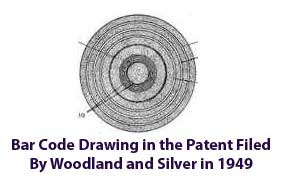From SCDigest's OnTarget e-Magazine
- Dec. 18, 2012 -
RFID and Auto ID News: Co-Inventor of Bar Code Concept Dies
Joseph Woodland's Pioneering Work Directly Connected to Inventory of UPC Code; Lines in the Sand Lead to Big Idea
SCDigest Editorial Staff
Joseph Woodland, the man generally credited with co-inventing the concept of the readable bar code, passed away last week at the age of 91 in New Jersey.
As the story goes Woodland and a man named Bernard Silver were students at what is now Drexel University in Philadelphia in the late 1940s when Silver overheard a grocery store executive asking a dean in the engineering school if students there could do some research on how product data could be captured at retail checkout.
SCDigest Says: |
 |
| The circular concept appealed to Woodland because he believed it would provide omni-directionality, so that a checkout clerk did not have to worry about the orientation of the item.
|
|
What Do You Say?
|
|
|
|
Silver was intrigued with the idea, even if the dean of the engineering school was not. Silver enticed school Woodland to also work on the concept.
An early idea, which involved printing product information in fluorescent ink and reading it with ultraviolet light, in the end proved unworkable.
Woodland, who already earned an undergraduate degree in mechanical engineering and had worked on the Manhattan Project that developed the first atom bomb in World War II, eventually dropped out of his graduate program at Drexel to work on the idea.
Convinced he could come up with the winning concept, Woodland spent a the winter of 1948-49 at his grandparent's home in Miami Beach – which proved in the end to be critical turn of events.
Woodland was familiar with Morse Code, and one day at the beach he was idly drawing the familiar dots and dashes. After a few minutes, the series of dots and dashes traced a series of parallel lines.
"What I'm going to tell you sounds like a fairy tale," Mr. Woodland said in an interview with Smithsonian magazine in 1999. "I poked my four fingers into the sand and for whatever reason - I didn't know - I pulled my hand toward me and drew four lines. I said: "Golly! Now I have four lines, and they could be wide lines and narrow lines instead of dots and dashes.' "
"Only seconds later," Mr. Woodland continued, "I took my four fingers - they were still in the sand - and I swept them around into a full circle."
Not long after, Woodland and Silver came up with a bar code that used a series of concentric circles to represent that data. They files for a patent for the invention in 1949, and it was awarded to them in 1952. They were awarded the patent under the rather odd name of ""Classifying Apparatus and Method."

The circular concept appealed to Woodland because he believed it would provide omni-directionality, so that a checkout clerk did not have to worry about the orientation of the item.
(RFID and AIDC Story Continued Below)
|